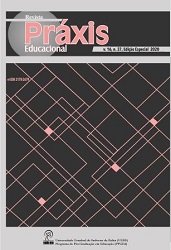WHY HAS ADHD BIOMEDICAL DIAGNOSIS BECOME SO DOMINANT?
DOI:
https://doi.org/10.22481/praxisedu.v16i37.5980Keywords:
ADHD, Biomedical model, MedicalizationAbstract
ADHD is today the most frequently diagnosed mental health condition among children and adolescents. The common belief is that it is a mental illness, and doctors and psychiatrists have solid scientific evidence to make the diagnosis and provide safe and effective psychopharmacological treatment. However, the scientific literature does not support this belief so widespread in our society. The article reviews the historical way in which this belief has been constructed and analyzes a scientific article that supposedly supports this way of approaching the behavioral and emotional problems of children of our times. The conclusion is that society today has no evidence to support this belief.
Downloads
Metrics
References
AMERICAN PSYCHIATRIC ASSOCIATION. Diagnostic and Statistical Manual of Mental Disorders (DSM-II), 1962.
AMERICAN PSYCHIATRIC ASSOCIATION. DSM-III, 1980.
AMERICAN PSYCHIATRIC ASSOCIATION. DSM-III-R, 1987.
AMERICAN PSYCHIATRIC ASSOCIATION. DSM-IV, 1994.
¬¬¬¬¬¬¬¬¬¬¬¬¬¬¬¬¬ AMERICAN PSYCHIATRIC ASSOCIATION. DSM-5, 2013.
BARKLEY, Russel. Transtorno do déficit de atenção/hiperatividade – TDAH: guia completo para pais, professores e profissionais da saúde. Porto Alegre: Artmed, 2002.
BARKLEY, Russel A. Against the Status Quo: Revising the Diagnostic Criteria for ADHD. Journal of the American Academy of Child and Adolescent Psychiatry, 2010, vol. 49 (3): 205-207.
BRUSCHMÜLLER, Katrin; MARGROF, Jürgen; SCHNEIDER, Silvia. Is ADHD diagnosed in accord with diagnostic criteria? Overdiagnosis and influence of client gender in diagnosis. Journal of Consulting and Clinical Psychology, 2012, vol 80 (1): 128-138.
CAREY, William B. Problems in Diagnosing Attention Activity. Pediatrics, March 1999, vol. 103 (3), 664.
CORRIGAN, Michael; WHITAKER, Robert. Lancet Psychiatry needs to retract the ADHD study. Enigma Study. www.madinamerica.com , April, 15, 2017. https://www.madinamerica.com/2017/04/lancet-psychiatry-needs-to-retract-the-adhd-enigma-study/ Acessado em 22 de setembro de 2019.
CORRIGAN, Michael. The 7 minute ADHD diagnosis. https://www.youtube.com/watch?v=Gj5VYYMeUZk&feature=youtu.be Acessado em 18 de Outubro de 2019.
DÍAS, Alícia; JIMÉNEZ, Juan; RODRÍGUEZ, Cristina; AFONSO, Miguel; ARTILES, Ceferino. Consideraciones de los estúdios de prevalência del trastorno por déficit de atención con o sin hiperactividad (TDAH). Revista de Psicologia y Educación, 8(2), 155-170, 2013.
EPSTEIN, Jeffery; LOREN, Richard. Changes in the Definition of ADHD in DSM-5: Subtle but Important. Neuropsychiatry (London). 2013 Oct 1; 3(5): 455–458.
ESTADÃO. No Brasil, 4,4% têm déficit de atenção. https://www.estadao.com.br/noticias/geral,no-brasil-4-4-tem-deficit-de-atencao-imp-,718134 Acessado em 10.9.2019.
FARAÓNE, Stephen ; SERGEANT, Joseph Antony; BIEDERMAN, Joseph. The worldwide prevalence of ADHD: is it an American condition? World Psychiatry: Official Journal of the World Psychiatric Association (WPA), 2(2), 104-113, 2003.
FREITAS, Fernando; AMARANTE, Paulo. Medicalização em Psiquiatria. Rio de Janeiro: Editora FIOCRUZ, 2ª. edição, 2017.
HODGKINS, Paul; DOSH, Jalpa; KAHLE, Jennifer; SIKIRICA, Vanja; CANGELOSI, Michael; SETYAWAY, Juliana; ERDER, Moshe; NEWMAN, Peter. A systematic review of global publication trends regarding long-term outeomes of ADHD. Frontiers in Psychiatry, 2(JAN), 1-18, 2012.
HOOGMAN, Martine: BRAALTEN, Janita; HIBAR, Derrek; MENNES, Maarten, et. Al. Subcortical brain volume differences in participants with attention deficit hyperactivity disorder in children and adults: a cross-sectional mega-analysis. Lancet Psychiatry, vol. 4, issue 4, April 01, 2017.
SECRETARIA MUNICIPAL DE EDUCAÇÃO DE LUZIÂNIA/GO. Artigo Material de Apoio para o Professor trabalhar com alunos com Transtorno de Déficit de Atenção e Hiperatividade -TDAH, Secretaria Municipal de Educação de Luziânia/GO, Divisão de Atendimento a Necessidades Educacionais Especiais, 2013.
SILVA, Ana Beatriz Barbosa. Mentes Inquietas – TDAH – Desatenção, Hiperatividade e Impulsividade, Rio de Janeiro: Objetiva, 2009.
STILL, George. Some abnormal psychical conditions in children – Lecture I. The Lancet, 1008-1012, 1902.
Downloads
Published
How to Cite
Issue
Section
License
You are free to:
Share - copy and redistribute the material in any medium or format; Adapt - remix, transform, and build from the material for any purpose, even commercially. This license is acceptable for Free Cultural Works. The licensor cannot revoke these freedoms as long as you follow the terms of the license.
Under the following terms:
Attribution - You must appropriately give credit, provide a link to the license, and indicate if any changes have been made. You may do so in any reasonable way, but not in a way that suggests that you or your use is endorsed by the licensor.
There are no additional restrictions - You cannot apply legal terms or technological measures that legally restrict others to make any use permitted by the license.










